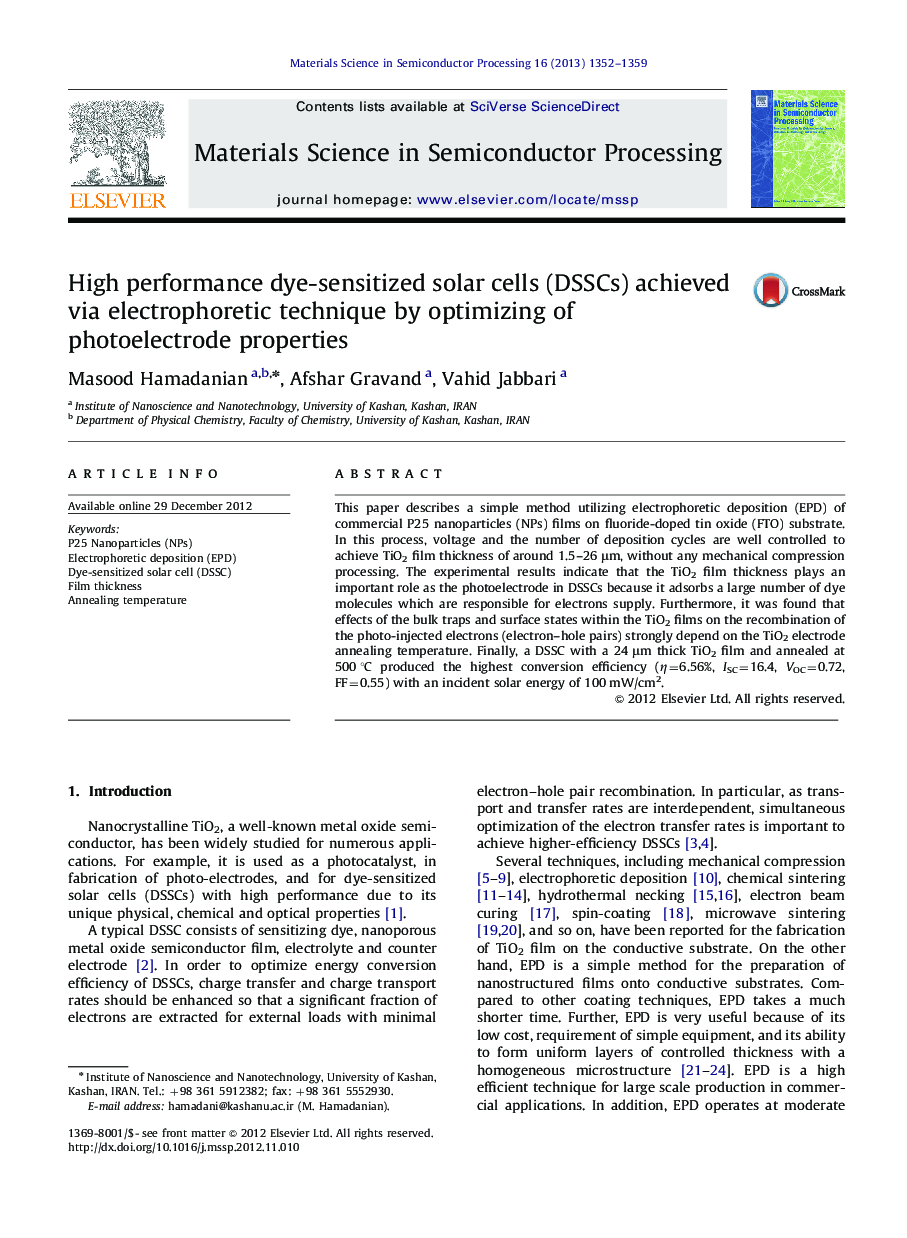| Article ID | Journal | Published Year | Pages | File Type |
|---|---|---|---|---|
| 728806 | Materials Science in Semiconductor Processing | 2013 | 8 Pages |
This paper describes a simple method utilizing electrophoretic deposition (EPD) of commercial P25 nanoparticles (NPs) films on fluoride-doped tin oxide (FTO) substrate. In this process, voltage and the number of deposition cycles are well controlled to achieve TiO2 film thickness of around 1.5–26 μm, without any mechanical compression processing. The experimental results indicate that the TiO2 film thickness plays an important role as the photoelectrode in DSSCs because it adsorbs a large number of dye molecules which are responsible for electrons supply. Furthermore, it was found that effects of the bulk traps and surface states within the TiO2 films on the recombination of the photo-injected electrons (electron–hole pairs) strongly depend on the TiO2 electrode annealing temperature. Finally, a DSSC with a 24 μm thick TiO2 film and annealed at 500 °C produced the highest conversion efficiency (η=6.56%, ISC=16.4, VOC=0.72, FF=0.55) with an incident solar energy of 100 mW/cm2.
